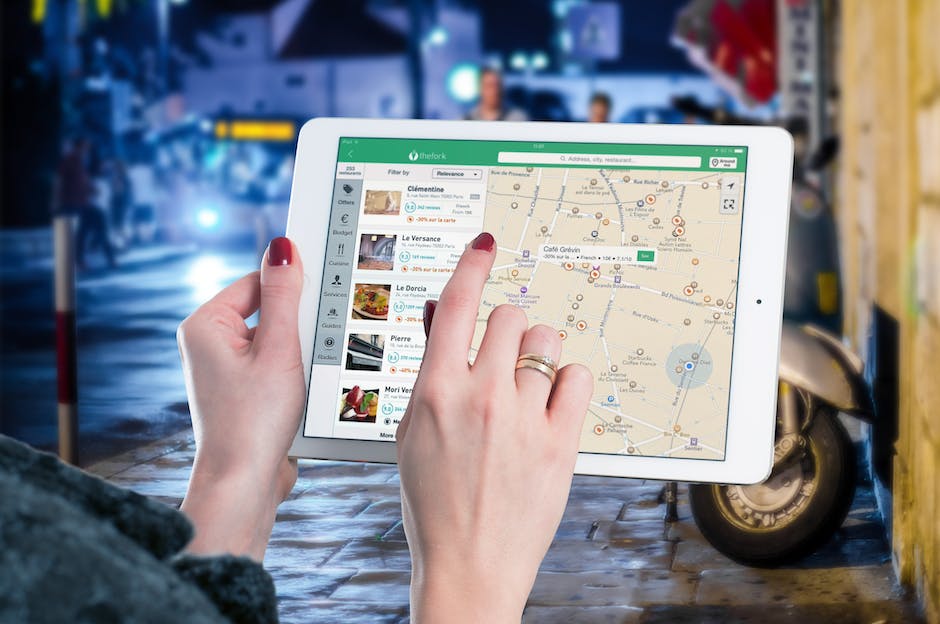Table of Contents
- Introduction
- Strategies for Handling Difficult Conversations
- Tips for Navigating Awkward Social Situations
- How to Communicate Effectively in Stressful Environments
- Techniques for Managing Conflict in Conversations
- The Importance of Active Listening in Situational Conversations
- Ways to Build Rapport and Establish Trust in Conversations
- Q&A
- Conclusion
Master the art of navigating any conversation with ease.
Introduction
Introduction:
Navigating Situational Conversations: A Comprehensive Guide is a valuable resource for individuals seeking to improve their communication skills in various social and professional settings. This guide offers practical tips and strategies for handling difficult conversations, managing conflicts, and building rapport with others. Whether you are navigating a challenging negotiation, addressing a sensitive topic with a colleague, or simply trying to make a good impression in a new social setting, this guide provides the tools you need to navigate any situation with confidence and grace.
Strategies for Handling Difficult Conversations
Navigating situational conversations can be a challenging task for many individuals. Whether it’s addressing a sensitive topic with a colleague, discussing a disagreement with a friend, or confronting a family member about a difficult issue, having the skills to handle these conversations effectively is crucial. In this comprehensive guide, we will explore strategies for navigating situational conversations with confidence and tact.
One of the first steps in handling difficult conversations is to approach the situation with empathy and understanding. It’s important to consider the other person’s perspective and emotions before diving into the conversation. By showing empathy and acknowledging the other person’s feelings, you can create a more open and respectful dialogue.
Another key strategy for navigating situational conversations is to be prepared and plan ahead. Before engaging in the conversation, take some time to think about what you want to say and how you want to say it. Consider the goals you want to achieve from the conversation and anticipate any potential challenges that may arise. By being prepared, you can approach the conversation with confidence and clarity.
When engaging in a difficult conversation, it’s important to use active listening skills. This means giving the other person your full attention, listening to their perspective without interrupting, and asking clarifying questions to ensure you understand their point of view. By actively listening, you can demonstrate respect and empathy, and create a more productive and meaningful conversation.
In addition to active listening, it’s important to communicate effectively during difficult conversations. Be clear and concise in your communication, and avoid using language that may be perceived as confrontational or judgmental. Use “I” statements to express your thoughts and feelings, and avoid blaming or accusing the other person. By communicating effectively, you can foster a more open and honest dialogue.
During a difficult conversation, it’s also important to manage your emotions and stay calm. It’s natural to feel anxious or upset during a challenging conversation, but it’s important to remain composed and focused. Take deep breaths, practice mindfulness techniques, and remind yourself of the goals you want to achieve from the conversation. By managing your emotions, you can approach the conversation with a clear and level-headed mindset.
Finally, it’s important to follow up after a difficult conversation. Check in with the other person to see how they are feeling and if there are any lingering concerns or issues that need to be addressed. By following up, you can demonstrate your commitment to resolving the situation and maintaining a positive relationship with the other person.
In conclusion, navigating situational conversations requires empathy, preparation, active listening, effective communication, emotional management, and follow-up. By incorporating these strategies into your approach to difficult conversations, you can handle challenging situations with confidence and tact. Remember that difficult conversations are a normal part of life, and by developing your skills in this area, you can build stronger relationships and resolve conflicts more effectively.
Tips for Navigating Awkward Social Situations

Navigating situational conversations can be a daunting task for many people. Whether it’s a difficult conversation with a coworker, a tense discussion with a family member, or an awkward encounter with a stranger, knowing how to handle these situations with grace and tact is essential. In this comprehensive guide, we will explore some tips and strategies for navigating awkward social situations with confidence and ease.
One of the most important things to remember when navigating situational conversations is to stay calm and composed. It can be easy to let our emotions get the best of us in tense situations, but maintaining a sense of calm and control is key to effectively communicating and resolving conflicts. Take a deep breath, pause for a moment to collect your thoughts, and approach the conversation with a level head.
Another important tip for navigating situational conversations is to actively listen to the other person. Listening is a crucial skill in effective communication, and it shows the other person that you value their perspective and are willing to hear them out. Avoid interrupting or jumping to conclusions, and instead, focus on truly understanding the other person’s point of view.
In addition to listening, it’s also important to practice empathy and understanding in situational conversations. Put yourself in the other person’s shoes and try to see things from their perspective. This can help you to better understand their feelings and motivations, and can lead to a more productive and respectful conversation.
When navigating awkward social situations, it’s important to choose your words carefully. Be mindful of your tone and body language, and try to communicate in a clear and respectful manner. Avoid using accusatory language or making assumptions about the other person’s intentions, as this can escalate tensions and make the situation more difficult to navigate.
In some cases, it may be necessary to set boundaries or assert yourself in situational conversations. If the other person is being disrespectful or crossing a line, don’t be afraid to speak up and assert your boundaries. Be firm but polite in your communication, and make it clear what behavior is unacceptable to you.
It’s also important to know when to walk away from a situational conversation. If the conversation becomes too heated or unproductive, it’s okay to take a step back and give yourself some space. Sometimes, a break can help both parties to cool off and approach the conversation with a fresh perspective.
In conclusion, navigating situational conversations can be challenging, but with the right mindset and strategies, it is possible to handle these situations with grace and confidence. By staying calm, listening actively, practicing empathy, choosing your words carefully, setting boundaries when necessary, and knowing when to walk away, you can navigate awkward social situations with ease. Remember that effective communication is key to resolving conflicts and building strong relationships, so approach situational conversations with an open mind and a willingness to find common ground.
How to Communicate Effectively in Stressful Environments
Effective communication is a crucial skill in navigating situational conversations, especially in stressful environments. Whether it’s a difficult conversation with a colleague, a confrontation with a friend, or a negotiation with a client, being able to communicate effectively can make all the difference in resolving conflicts and building strong relationships. In this comprehensive guide, we will explore strategies and techniques to help you communicate effectively in stressful situations.
One of the key components of effective communication in stressful environments is active listening. Active listening involves fully concentrating on what is being said rather than just passively hearing the words. This means paying attention to both verbal and nonverbal cues, such as tone of voice, body language, and facial expressions. By actively listening, you can better understand the other person’s perspective and respond in a more empathetic and constructive manner.
Another important aspect of effective communication in stressful situations is managing your emotions. It’s natural to feel anxious, frustrated, or defensive in stressful conversations, but allowing your emotions to take control can hinder your ability to communicate effectively. Instead, try to remain calm and composed, take deep breaths, and focus on the issue at hand rather than getting caught up in your emotions. By managing your emotions, you can approach the conversation with a clear and rational mindset.
In addition to active listening and managing your emotions, it’s also important to be assertive in your communication. Being assertive means expressing your thoughts, feelings, and needs in a clear and respectful manner, without being aggressive or passive. Assertive communication can help you set boundaries, stand up for yourself, and assert your needs without resorting to conflict or confrontation. By being assertive, you can communicate your message effectively while also respecting the other person’s perspective.
Furthermore, effective communication in stressful environments requires empathy and understanding. Empathy involves putting yourself in the other person’s shoes and trying to see things from their perspective. By showing empathy, you can build trust, rapport, and mutual respect in the conversation. Understanding the other person’s feelings and motivations can help you communicate more effectively and find common ground to resolve conflicts.
Moreover, it’s important to be open and honest in your communication. Transparency and honesty can help build trust and credibility in the conversation. By being open about your thoughts, feelings, and intentions, you can create a safe and supportive environment for effective communication. Avoiding deception, manipulation, or hidden agendas can foster a sense of trust and authenticity in the conversation.
Lastly, effective communication in stressful environments requires practice and patience. It’s not always easy to navigate difficult conversations, especially when emotions are running high. However, by practicing active listening, managing your emotions, being assertive, showing empathy, and being open and honest, you can improve your communication skills and build stronger relationships with others. Patience is also key in effective communication, as it takes time and effort to develop these skills and apply them in real-life situations.
In conclusion, effective communication in stressful environments is essential for resolving conflicts, building relationships, and achieving positive outcomes. By practicing active listening, managing your emotions, being assertive, showing empathy, being open and honest, and being patient, you can navigate situational conversations with confidence and skill. Remember that communication is a two-way street, so be willing to listen, understand, and collaborate with others to achieve mutual understanding and resolution. With these strategies and techniques, you can communicate effectively in stressful environments and build strong and meaningful connections with others.
Techniques for Managing Conflict in Conversations
Navigating situational conversations can be a challenging task, especially when conflict arises. Whether it’s a disagreement with a colleague, a difficult conversation with a friend, or a confrontation with a family member, knowing how to manage conflict in conversations is essential for maintaining healthy relationships. In this comprehensive guide, we will explore techniques for managing conflict in conversations and provide tips for navigating difficult situations with grace and tact.
One of the most important aspects of managing conflict in conversations is active listening. When engaged in a difficult conversation, it’s crucial to listen attentively to the other person’s perspective without interrupting or becoming defensive. By actively listening, you demonstrate respect for the other person’s point of view and create a space for open communication.
Another key technique for managing conflict in conversations is practicing empathy. Put yourself in the other person’s shoes and try to understand their feelings and motivations. By showing empathy, you can build trust and rapport with the other person, which can help to de-escalate the situation and find common ground.
In addition to active listening and empathy, it’s important to remain calm and composed during difficult conversations. Avoid raising your voice or becoming aggressive, as this can escalate the conflict and make it harder to find a resolution. Instead, take deep breaths, maintain eye contact, and speak in a calm and measured tone.
When navigating situational conversations, it’s also helpful to use “I” statements to express your thoughts and feelings. By framing your statements in terms of your own perspective, you can avoid sounding accusatory or confrontational. For example, instead of saying “You always make me feel like I’m not good enough,” try saying “I feel hurt when I don’t receive recognition for my hard work.”
In addition to using “I” statements, it’s important to be assertive in expressing your needs and boundaries. Clearly communicate what you are comfortable with and what you are not willing to tolerate. By setting boundaries, you can establish clear expectations and prevent misunderstandings that can lead to conflict.
When faced with a difficult conversation, it’s also important to focus on finding a solution rather than assigning blame. Instead of getting caught up in who is right or wrong, work together with the other person to find a mutually beneficial resolution. By approaching the conversation with a problem-solving mindset, you can move past the conflict and strengthen your relationship.
In conclusion, navigating situational conversations requires a combination of active listening, empathy, composure, assertiveness, and problem-solving skills. By practicing these techniques, you can effectively manage conflict in conversations and maintain healthy relationships with those around you. Remember to approach difficult conversations with an open mind and a willingness to find common ground, and you will be well-equipped to navigate any situation with grace and tact.
The Importance of Active Listening in Situational Conversations
Effective communication is a crucial skill in both personal and professional settings. One aspect of communication that is often overlooked but is essential in navigating situational conversations is active listening. Active listening involves fully concentrating on what is being said, understanding the message, and responding thoughtfully. In situational conversations, where the context and dynamics are constantly changing, active listening becomes even more critical.
One of the key reasons why active listening is important in situational conversations is that it helps build trust and rapport with the other person. By demonstrating that you are fully present and engaged in the conversation, you show respect for the other person’s thoughts and feelings. This can help create a positive and open communication environment, where both parties feel comfortable sharing their perspectives and concerns.
Active listening also allows you to gather important information and insights that can help you navigate the conversation effectively. By paying attention to verbal cues, tone of voice, and body language, you can better understand the other person’s emotions and intentions. This can help you tailor your responses and actions in a way that is sensitive and appropriate to the situation.
Furthermore, active listening can help prevent misunderstandings and conflicts in situational conversations. By actively listening to the other person’s perspective, you can clarify any points of confusion or ambiguity, and ensure that both parties are on the same page. This can help avoid miscommunication and prevent unnecessary tension or disagreements from arising.
In addition, active listening can help you build empathy and understanding in situational conversations. By truly listening to the other person’s experiences and emotions, you can develop a deeper sense of empathy and compassion. This can help you connect with the other person on a more personal level, and foster a sense of mutual respect and understanding.
To practice active listening in situational conversations, there are several key strategies that you can employ. First, make a conscious effort to focus on the speaker and eliminate distractions. This means putting away your phone, turning off the TV, and giving the other person your full attention. Second, show that you are listening by using verbal and nonverbal cues, such as nodding your head, making eye contact, and providing feedback. This can help the other person feel heard and valued.
Another important strategy is to ask clarifying questions and paraphrase the speaker’s points to ensure that you have understood them correctly. This can help prevent misunderstandings and show that you are actively engaged in the conversation. Finally, practice empathy and understanding by putting yourself in the other person’s shoes and trying to see things from their perspective. This can help you build rapport and trust, and create a more positive and productive communication environment.
In conclusion, active listening is a crucial skill in navigating situational conversations. By demonstrating respect, gathering important information, preventing misunderstandings, and building empathy, active listening can help you communicate effectively and build strong relationships with others. By practicing active listening strategies, you can enhance your communication skills and navigate situational conversations with confidence and success.
Ways to Build Rapport and Establish Trust in Conversations
Effective communication is a crucial skill in both personal and professional settings. Building rapport and establishing trust in conversations can greatly enhance the quality of interactions and relationships. Situational conversations, in particular, require a certain level of finesse and adaptability to navigate successfully. In this comprehensive guide, we will explore various ways to build rapport and establish trust in situational conversations.
One of the key elements in building rapport is active listening. By actively listening to the other person, you demonstrate that you value their thoughts and opinions. This can help create a sense of trust and understanding between both parties. Additionally, asking open-ended questions can encourage the other person to share more about themselves, which can further strengthen the connection.
Another important aspect of building rapport is nonverbal communication. Your body language, facial expressions, and tone of voice can all convey important messages to the other person. Maintaining eye contact, nodding in agreement, and using a friendly tone can help create a positive and welcoming atmosphere in the conversation.
Empathy is also a crucial component in building rapport and establishing trust. By putting yourself in the other person’s shoes and trying to understand their perspective, you can show that you care about their feelings and experiences. This can help foster a sense of connection and mutual respect in the conversation.
In situational conversations, it is important to be adaptable and flexible. Each situation is unique, and being able to adjust your communication style accordingly can help you navigate the conversation more effectively. Pay attention to the other person’s cues and adjust your approach as needed to ensure that the conversation flows smoothly.
Building rapport and establishing trust in situational conversations also requires authenticity. Being genuine and sincere in your interactions can help create a sense of trust and credibility. Avoiding overly rehearsed or scripted responses can make the conversation feel more natural and authentic.
In addition to these strategies, it is important to be mindful of your own biases and assumptions in conversations. Being aware of your own biases can help you approach the conversation with an open mind and a willingness to learn from the other person. This can help create a more inclusive and respectful dialogue.
Overall, building rapport and establishing trust in situational conversations requires a combination of active listening, nonverbal communication, empathy, adaptability, authenticity, and self-awareness. By incorporating these strategies into your interactions, you can create meaningful connections and build strong relationships with others. Remember that effective communication is a skill that can be developed and improved over time, so practice these techniques regularly to enhance your conversational skills.
Q&A
1. What is a situational conversation?
A situational conversation is a conversation that is influenced by the specific circumstances or context in which it takes place.
2. Why is it important to navigate situational conversations effectively?
Navigating situational conversations effectively can help build relationships, resolve conflicts, and achieve desired outcomes in various social and professional settings.
3. What are some key strategies for navigating situational conversations?
Some key strategies for navigating situational conversations include active listening, empathy, adaptability, and clear communication.
4. How can active listening help in situational conversations?
Active listening involves fully concentrating on what is being said, understanding the message, and responding thoughtfully. This can help in understanding others’ perspectives and responding appropriately in situational conversations.
5. Why is empathy important in situational conversations?
Empathy allows individuals to understand and share the feelings of others, which can help in building rapport, resolving conflicts, and fostering positive relationships in situational conversations.
6. How can clear communication enhance situational conversations?
Clear communication involves expressing thoughts and ideas effectively, which can help in avoiding misunderstandings, clarifying expectations, and achieving mutual understanding in situational conversations.
Conclusion
In conclusion, Navigating Situational Conversations: A Comprehensive Guide provides valuable insights and strategies for effectively managing various types of conversations in different situations. By understanding the principles outlined in the guide, individuals can improve their communication skills and navigate challenging conversations with confidence and success.





